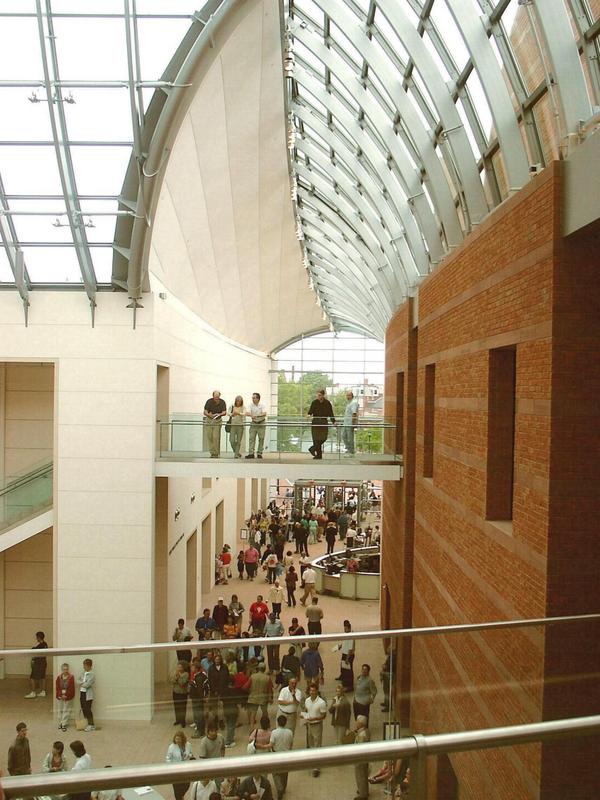A REPORT FROM THE PHANTOM ZONE
When I travel, one of my favorite things to do is to visit smaller, less well-known museums. The reason why I love to visit smaller museums is that I can really enjoy visiting them without any expectations. When I visit MOMA or the Guggenheim, the work had better be good. In fact, the quality of work had better be fantastic if they are going to claim that they are two of the high water marks of exhibiting art in the world. With regional museums, I have absolutely no expectations and that is actually quite freeing. Most regional institutions don’t claim to exhibit the best quality work in the world because they usually exist to support a small community and sometimes they try to positively display local collections or artists. A great example of this is the DeCordova Museum whose mission statement even says that they focus primarily on the art of the New England region. This is not to say that the DeCordova doesn’t show world-class art, but when I visit the DeCordova, I expect them to take more risks and exhibit regional artists whose work may not be as well known outside of New England. By taking on more risk and showing less well known artists, the DeCordova is free to present work that is not as resolved, but that is the best part of the Museum. Regional institutions are able to highlight interesting and valuable work without worrying if they are showing the best quality work in the world because they serve a different function.
Here are a few of my favorite smaller or more regional museums in the Northeast that all show great work and take high risks by showing regional work:
The DeCordova
The Portland Museum of Art
The Aldrich Contemporary Art Museum
The Phillips Collection
Currier Museum of Art
Peabody Essex Museum
The Newark Museum
While I love to visit regional museums that are dedicated to the history or art of a small community, my favorite thing to visit is a museum that is dedicated to exhibiting one niche item. For example, the Bata Shoe Museum in Toronto is a huge museum that is dedicated to exhibiting shoes and even has a monthly Podcast about shoes from the assistant curator! The Center for Puppetry Arts,The Computer History Museum and the National Cowboy Museum are all really amazing museums that have active scholarly research while simultaneously seeking to preserve and display important elements of our culture. These are all serious museums, not roadside attractions that are definitely worth visiting and again, the best part is that you can visit them with no expectations because they are museums that are not even trying to compete with the quality of work being shown at large international art museums.
I also love visiting museums that have unusual collections. The Currier Museum in Manchester New Hampshire is a fantastic museum that shows some of the best in contemporary and modern art for a local audience, but they also house the Henry Melville Fuller Paperweight Collection with over 330 glass paperweights. I went to the Currier to see their latest show, the Vergobbi collection, but the fact that they also house a huge paperweight collection proved almost as fascinating as the Modernist collection on display. However, if you live near Boston, then one of the best and most unique museums in the world is housed in Dedham, just outside of the men’s room of the Dedham Community Theatre.
I love the Museum of Bad Art (MOBA) because it is exactly what it advertises to be. It does not say that it is competing with MOMA for exhibiting the finest quality work in the world, but the exact opposite. One of the things MOBA has done that MOMA has not is allowed all viewers to see their collection for free. So, if you go, you can’t be that disappointed because it cost you nothing! The MOBA is a great place to visit because it can be viewed so many ways. For me, I think that the existence of the Museum raises fundamental questions about art and museology. It seems to me that unlike most other institutions, MOBA does not to re-enforce previously and arbitrarily created notions of good and bad art, but it challenges the binary itself. What does it mean when a museum validates a piece of art as good or bad? What does it mean when a museum fulfils its mission statement, but that mission statement exists outside of a hierarchy that people are used to? Also, the work on display directly indicts the viewer. Who am I to say if a piece is good or bad? What gives me the right to blatantly laugh at someone else’s work? Why do I feel entitled to judge? I love the museum because while I’m there I am very aware of my own aesthetic prejudices as well as those around me.
So I love smaller or regional institutions because they exist outside of the hierarchy of larger institutions. Places like MOMA and the Tate should be competing against each other for larger global relevancy, but other museums are equally important and frequently, they can bring issues to the table that larger institutions can’t. The real key to enjoying smaller institutions is to remember that not everything should be compared using the same criteria. If smaller institutions are evaluated for their own merits, then they can be really enjoyed for what they are: regional and unique.
Do you know of a good regional or unique museum?
Then please add it in the comment section so that I can go visit too!
- The inside of the Peabody Essex Museum
- My favorite piece from the Museum of Bad Art Lucy In the Field With Flowers Oil on canvas by Unknown 24″ x 30″ Acquired from trash in Boston






